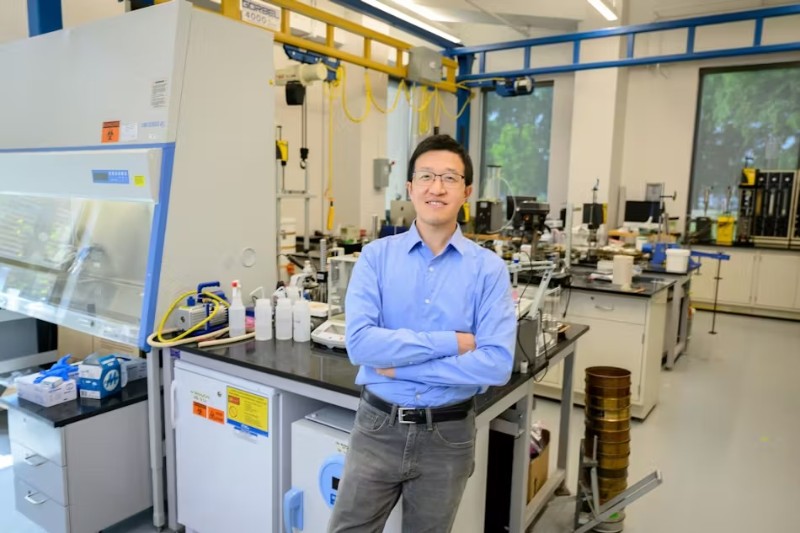

Bio-inspired approach to 3D-printed soil structures delivers lightweight, strong, and insulated buildings.
The fusion of nature’s ingenuity with cutting-edge technology is opening new doors in sustainable construction. At Louisiana State University, Professor Hai “Thomas” Lin is taking inspiration from mud dauber nests and fungal mycelium to develop 3D-printed soil for eco-friendly and efficient housing. Supported by a USD $630,000 National Science Foundation CAREER Award, Lin’s research explores how lessons from the natural world can address modern construction challenges. (main pic: LSU Civil Engineering Professor Hai “Thomas” Lin. credit: Louisiana State University College of Engineering.)
Mud daubers (or mud wasp), though small, are remarkable soil engineers. “Mud daubers carefully select the best type of soil for their nests, manage the moisture content of the soil to make it easier to work with, tap the soil repeatedly with their front legs and jaws to compact and make it stronger,” Lin says. These nests, arranged in clusters of tube-like cells, are lightweight, strong, and insulated – offering an inspiring blueprint for construction innovation.
Lin’s research involves creating a printable soil mixture infused with fungal spores and natural fibres. This material is printed and compacted simultaneously, while fungal mycelium grows within the structure to reinforce and waterproof it. “Mud dauber-inspired 3D soil printing can accelerate earthen building construction, making them more efficient and resilient,” Lin explains. The process incorporates modular components, printed in controlled environments and assembled on-site, minimising waste and streamlining construction.
Earthen buildings, often perceived as basic or outdated, are highlighted in his work as sophisticated and sustainable. With natural fire and termite resistance, superior insulation, and low embodied energy, they present a compelling case for modern construction. “Far from living in a ‘mud dauber’s nest,’ you’d be living in a modern, eco-friendly home that’s designed with sustainability, comfort, and durability in mind,” Lin says.
This study also builds on Lin’s earlier exploration of fungal mycelium as a natural binder for soil. Mycelium has demonstrated the ability to strengthen and waterproof soil surfaces, adding durability to earthen structures. Its integration with 3D-printed soil aligns with the vision of creating resilient, efficient housing solutions.
Lin’s objective with his research is to bridge the gap between nature and technology, demonstrating how bio-inspired designs can help redefine construction practices.
See: LSU